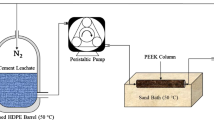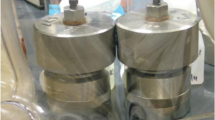Abstract
This paper presents regional CO2 solubility trapping potential for stable CO2 storage as immobile phase and decomposed form while CO2 migrates through flow pathways characterized by the geological structure of an aquifer in Pohang basin, SE offshore Korea. The saline aquifer in Pohang basin has been selected as a target formation for geologic carbon storage due to favorable geologic structures and sedimentary strata defined through seismic survey. The aquifer is confined by southeast and northwest faults, and structure is unconfined and sloping toward the northeast direction. The main target within the aquifer to store CO2 contains west plunging anticlines. In order to enlarge contact area of CO2 with brine and improve injectivity, the CO2 injector is located on marginal anticlines or small synclines. This structure may significantly affect CO2 flow dynamics through upward migration pathways within the aquifer. We, in this area, provide estimates for CO2 solubility trapping affected by dynamic CO2 migration pathways and present different types of CO2 trapping potentials. The numerical results based on thermodynamic equilibrium equation provide regional CO2 solubility trapping potential which has a linear relationship with brine salinity. We suggest that dynamic migration pathways resulting from geological structure are significantly important to increase CO2 solubility trapping potential in geological storage of CO2.
Similar content being viewed by others
References
Bachu, S., 2000, Sequestration of CO2 in geological media: criteria and approach for site selection in response to climate change. Energy Conversion and Management, 41, 953–970.
Bachu, S. and Adams, J.J., 2003, Sequestration of CO2 in geological media in response to climate change: Capacity of deep saline aquifers to sequester CO2 in solution. Energy Conversion and Management, 44, 3151–3175.
Choi, P.Y., 2006, Singwang strike-slip duplex around the Pohang Basin, SEKorea: its structural evolution and role in opening and fill of the Miocene basin. Geosciences Journal, 10, 145–157.
Collins, D.A., Nghiem, L.X., Li, Y.-K., and Grabonstotter, J.E., 1992, An efficient approach to adaptive-implicit compositional simulation with an equation of state. SPE Reservoir Engineering, 7, 259–264.
Ennis-King, J.P. and Paterson, L., 2005, Role of convective mixing in the long-term storage of carbon dioxide in deep saline formations. SPE Journal, 10, 349–356.
Gibbins, J. and Chalmers, H., 2008, Carbon capture and storage. Energy Policy, 36, 4317–4322.
Grobe, M., Pashin, J.C., and Dodge, R.L., 2009, Carbon Dioxide Sequestration in Geological Media: State of the Science. AAPG studies in Geology No. 59, American Association of Petroleum Geologists, Tulsa, 715 p.
IPCC (Intergovernmental Panel on Climate Change), 2005,Carbon Dioxide Capture and Storage. Cambridge University Press, New York, 431 p.
Jarrell, P.M., Fox, C.E., Stein, M.H., and Webb, S.L., 2002, Practical aspects of CO2 flooding. SPE Monograph Series Vol. 22, 214 p.
Kaldi, J.G. and Gibson-Poole, C.M., 2008, Storage capacity estimation, site selection and characterization for CO2 storage projects. CO2CRC Report No. RPT08-1001, Cooperative Research Centre for Greenhouse Gas Technologies, Canberra, 52 p.
Kim, A.R., Cho, G.C., and Kwon, T.H., 2013, Site characterization and geotechnical aspects on geological storage of CO2 in Korea. Geosciences Journal, 18, 167–179.
Kumar, A., Ozah, R., Noh, M., Pope, G.A., Bryant, S., Sepehrnoori, K., and Lake, L.W., 2005, Reservoir simulation of CO2 storage in deep saline aquifers. SPE Journal, 10, 336–348.
Lee, Y.S., Kim, K.H., Lee, T.H., Sung, W.M., Park, Y.C., and Lee, J.H., 2009, Analysis of CO2 endpoint relative permeability and injectivity by change in pressure, temperature, and phase in saline aquifer. Energy Sources, Part A, 32, 83–99.
Lee, Y.S., Park, Y.C., Kwon, S.I., and Sung, W.M., 2008, The feasibility study for CO2 sequestration into deep saline aquifer at Gorae-V structure in Korea. Journal of the Korean Society of Mineral and Energy Resources Engineers, 45, 381–393.
Nghiem, L., Sammon, P., Grabenstetter, J., and Ohkuma, H., 2004, Modeling CO2 Storage in Aquifers with a Fully-Coupled Geochemical EOS Compositional Simulator. Proceedings of SPE/DOE 14th Symposium on Improved Oil Recovery, Tulsa, April 17–21. http://dx.doi.org/10.2118/89474-MS
Nghiem, L., Yang, C., Shrivatava, V., Koshe, B., Hassam, M., Chen, D., and Card, C., 2009, Optimization of residual gas and solubility trapping for CO2 Storage in Saline Aquifer. Proceedings of SPE Reservoir Simulation Symposium, Woodlands, Feb. 2–4. http://dx.doi.org/10.2118/119080-MS
Shinn, Y.J., Yoo, D.G., Hwang, S.H., Park, Y.C., and Huh, D.G., 2012, A preliminary screening of CO2 geological storage in Ulleung basin, Korea. Journal of the Korean Society of Mineral and Energy Resources Engineers, 49, 47–58.
Sohn, Y.K., Rhee, C.W., and Shon, H., 2001, Revised stratigraphy and reinterpretation of the Miocene Pohang basinfill, SEKorea: sequence development in response to tectonism and eustasy in a back-arc basin margin. Sedimentary Geology, 143, 265–285.
Sohn, Y.K. and Son, M., 2004, Synrift stratigraphic geometry in a transfer zone coarse-grained delta complex, Miocene Pohang Basin, SEKorea. Sedimentology, 51, 1387–1408.
Song, Y., Kim, H.C., and Lee, T.J., 2010, Geothermal development in Korea: Country update 2005-2009. World Geothermal Congress 2010,Bali, April 25–29, 1–11.
U.S. Department of Energy, Office of Fossil Energy, National Energy Technology Laboratory. 2007,Carbon Sequestration ATLAS of the United States and Canada.
U.S. EIA (U.S. Energy Information Administration), 2014}, International Energy Outlook 2014. DOE/EIA-0484, U.S. Department of Energy, Washington, 57 p
van der Meer, L.G.H., Wildenborg, A.F.B., and Breunese, J.N., 1998, Potentieel voor CO2-opslag onder het Nederlandse deel van het Continentale Plat. Nederlands Instituut voor Toegepaste Geowetenschappen TNO, Utrecht.
Yoon, S.H. and Chough, S.K., 1995, Regional strike slip in the eastern continental margin of Korea and its tectonic implications for the evolution of Ulleung Basin, East Sea. Geological Society of America Bulletin, 107, 83–97.
Author information
Authors and Affiliations
Corresponding author
Rights and permissions
About this article
Cite this article
Lee, H., Seo, J., Lee, Y. et al. Regional CO2 solubility trapping potential of a deep saline aquifer in Pohang basin, Korea. Geosci J 20, 561–568 (2016). https://doi.org/10.1007/s12303-015-0068-4
Received:
Accepted:
Published:
Issue Date:
DOI: https://doi.org/10.1007/s12303-015-0068-4




